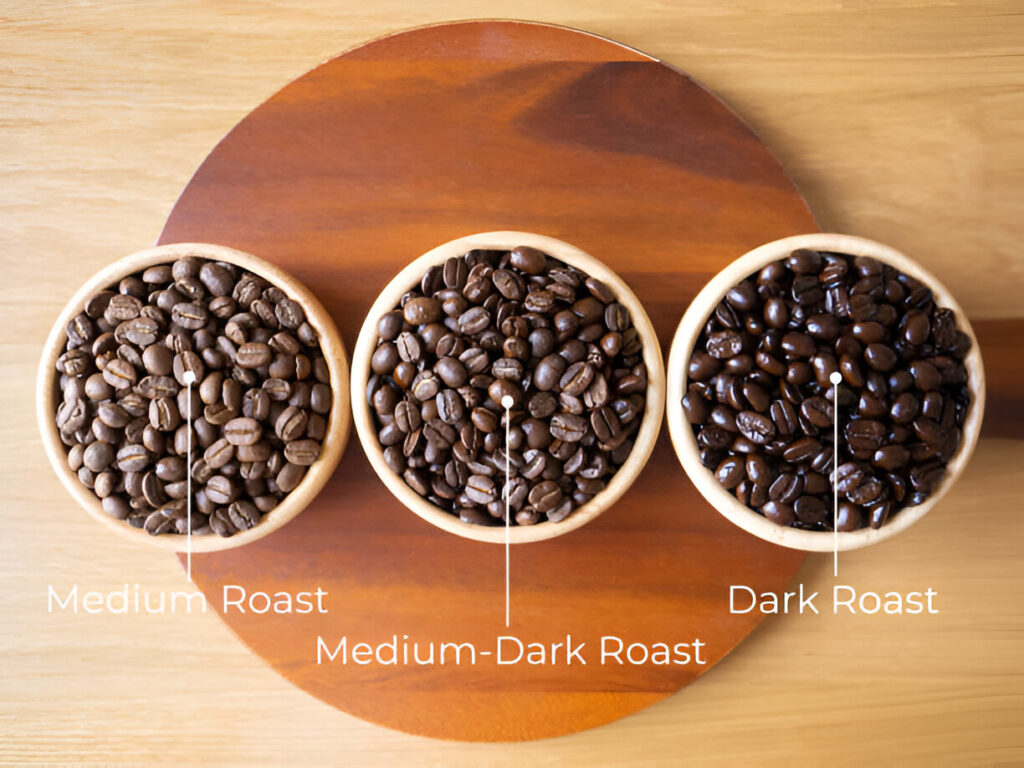What Do Roast Levels, Origins, and Certifications Mean?
If you’ve ever stood in the coffee aisle staring at bags filled with words like Single Origin, Medium Roast, or Fair Trade Certified, you’re not alone. Understanding coffee labels can feel like cracking a secret code. But once you know what these terms mean, you’ll be better equipped to choose a coffee that matches your taste preferences and values.
In this guide, we’ll decode coffee labels by explaining key terms like roast levels, bean origins, and certifications—so you can make more informed and delicious decisions.
☕ 1. Coffee Roast Levels Explained

One of the first things you’ll see on a coffee label is the roast level. This indicates how long the beans were roasted and has a huge impact on the flavor, aroma, and caffeine content.
🔸 Light Roast
- Flavor: Bright, acidic, fruity
- Caffeine: Highest
- Best for: Those who enjoy complex, tea-like flavors
🔸 Medium Roast
- Flavor: Balanced, smooth, slightly sweet
- Caffeine: Moderate
- Best for: A balanced cup that highlights bean origin
🔸 Dark Roast
- Flavor: Bold, smoky, chocolatey
- Caffeine: Slightly lower
- Best for: Lovers of deep, rich coffee flavors
🌍 2. Coffee Bean Origins: Why They Matter
The origin of your coffee—where it was grown—affects its flavor profile, aroma, and even acidity. Coffee beans are typically grown in what’s known as the Bean Belt (between the Tropics of Cancer and Capricorn), including:
- Ethiopia: Floral, fruity, wine-like
- Colombia: Sweet, nutty, medium body
- Brazil: Chocolatey, low acidity, creamy
- Sumatra: Earthy, full-bodied, herbal
- Guatemala: Cocoa notes, balanced acidity
Tip: Look for “Single Origin” for a distinct, traceable flavor or “Blend” for a mix of bean profiles.
✅ 3. Coffee Certifications: What Do They Mean?

Certifications can tell you a lot about how the coffee was grown, sourced, and processed. Here are the most common ones:
🌿 Organic Certified
- No synthetic pesticides or chemicals used
- Better for the environment and often considered healthier
🤝 Fair Trade Certified
- Farmers receive fair compensation
- Supports ethical labor practices and sustainability
🌱 Rainforest Alliance Certified
- Focus on environmental conservation and community well-being
- Often includes climate-friendly farming practices
🔒 UTZ Certified (now part of Rainforest Alliance)
- Emphasizes traceability, responsible farming, and supply chain transparency
🐦 Bird-Friendly Certified
- Shade-grown to preserve bird habitats
- Most eco-friendly certification
📦 4. Other Common Coffee Label Terms
Here are a few more terms you might see on your coffee bag:
- Arabica vs. Robusta: Arabica is smoother and more flavorful; Robusta is stronger and more bitter with higher caffeine.
- Washed Process: Cleaner, brighter taste.
- Natural Process: Fruitier, heavier body.
- Roast Date: Always check for freshness—buy within 2-3 weeks of the roast date.
✅ Final Thoughts: Be an Informed Coffee Consumer

By learning how to read coffee labels and understanding what roast levels, origins, and certifications really mean, you’ll be able to choose a coffee that aligns with your taste preferences, ethical values, and sustainability goals.
Next time you grab a bag, you won’t be guessing—you’ll be choosing like a pro.




